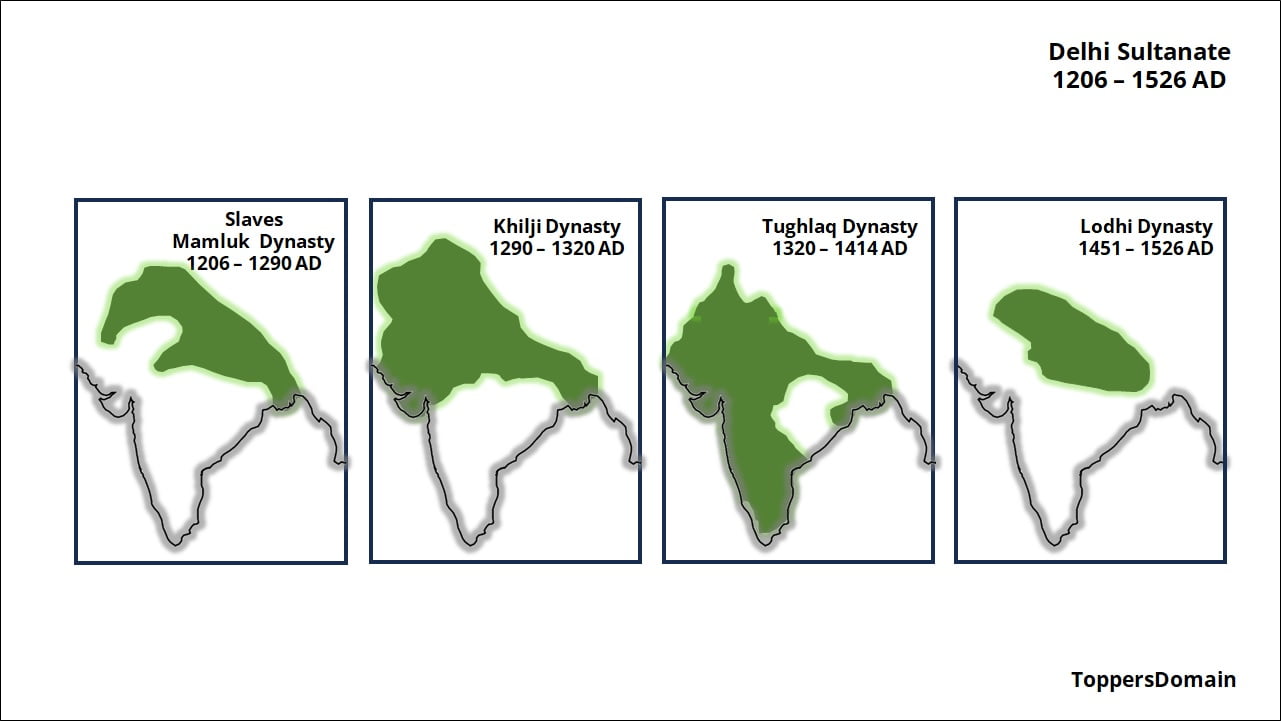Indian Sultanate
History
- Language
Index
Introduction
The Indian Sultanate stands as a significant milestone in the history of India, profoundly shaping its cultural, political, and socio-economic landscape. This epoch-making period was marked by the consolidation of Muslim rule, facilitated by the arrival of Arab traders in the 7th and 8th centuries, who introduced Islam to the Indian subcontinent. However, it was during the 12th century that a pivotal political change occurred, thanks to the Ghazni Empire's multiple expeditions into northern India under Sultan Mahmud of Ghazni's leadership. These expeditions, while aimed at plundering the region's wealthy temples, unknowingly paved the way for the eventual establishment of Muslim rule in India.
Slave Dynasty
The Battle of Tarain in 1192 proved to be a defining moment when Muhammad of Ghuri, the successor to Mahmud of Ghazni, decisively defeated the last Hindu king of Delhi, Prithviraj Chauhan. This resounding victory marked the first significant triumph of a Muslim ruler over the Hindu kingdoms in northern India, setting the stage for the establishment of the Delhi Sultanate. Following this triumph, Muhammad of Ghuri appointed his trusted lieutenant, Qutb-ud-din Aibak, as the governor of Delhi. Aibak, a former slave who climbed the ranks, went on to become the first Sultan of Delhi, laying the foundation of the Slave Dynasty that would govern the Sultanate for nearly a century.
Under the Slave Dynasty, Delhi emerged as the political and administrative hub of the Sultanate. The rulers faced numerous challenges, including threats from neighboring Hindu kingdoms and internal conflicts. However, they skillfully navigated these challenges by adopting policies that accommodated the diverse religious and cultural traditions of the Indian subcontinent. This inclusive approach not only helped consolidate their power but also fostered stability and garnered the loyalty of their subjects.
Khilji Dynasty
In 1290, the Khilji Dynasty ascended to power. Alauddin Khilji, the most prominent ruler of this dynasty, is remembered for his military prowess and administrative reforms. Alauddin launched successful military campaigns against the Hindu kingdoms in southern India, expanding the Sultanate's territorial boundaries. Additionally, he implemented measures to strengthen the administration and taxation system, ensuring greater efficiency and revenue generation. These reforms not only bolstered the Sultanate's power but also laid the foundation for subsequent dynasties to thrive.
Tughlaq Dynasty
The Tughlaq Dynasty, which succeeded the Khilji Dynasty in 1320, was marked by the reign of Muhammad bin Tughlaq. Known for his ambitious yet controversial policies, Muhammad attempted to centralize the administration, introduce token currency, and shift the capital from Delhi to Daulatabad in the Deccan. However, these audacious initiatives faced significant opposition, resulting in administrative challenges and economic hardships. While Muhammad's vision was admirable, the practical implications of his policies led to unintended consequences, highlighting the importance of pragmatism in governance.
Sayyid and Lodi Dynasties
After the Tughlaqs, the Sayyid and Lodi Dynasties took the reins of the Delhi Sultanate. The Lodi Dynasty faced external threats from the Timurids, who were rising in power in Central Asia, as well as internal conflicts among the nobility. This fragile situation provided an opportune moment for Babur, a Timurid prince and the founder of the Mughal Empire, to invade India in 1526. Babur's decisive victory in the First Battle of Panipat marked the end of the Delhi Sultanate and the dawn of the Mughal era.
Impact of the Sultanate
The establishment of the Sultanate l eft an indelible imprint on the Indian subcontinent. It brought about significant changes in the political, cultural, and social fabric of the region. Muslim rulers introduced Persian and Islamic architectural styles, literature, and legal systems, leaving a lasting impact on Indian culture. The fusion of Persian, Central Asian, and Indian traditions gave birth to a vibrant and diverse artistic and cultural landscape.
Conclusion :
In conclusion, the establishment of the Sultanate in India was a complex process that unfolded over several centuries. It was the result of a combination of factors, including military conquests and political maneuvering. Once the Delhi Sultanate was established, the rulers faced the daunting task of governing a vast and diverse territory. They tackled this challenge by adopting policies that allowed for religious and cultural pluralism, fostering stability and earning the loyalty of their subjects. The Sultanate became a melting pot of various cultural influences, blending Persian, Central Asian, and Indian traditions. Today, we can still witness the enduring legacy of the Sultanate in the diverse cultural heritage of India.


